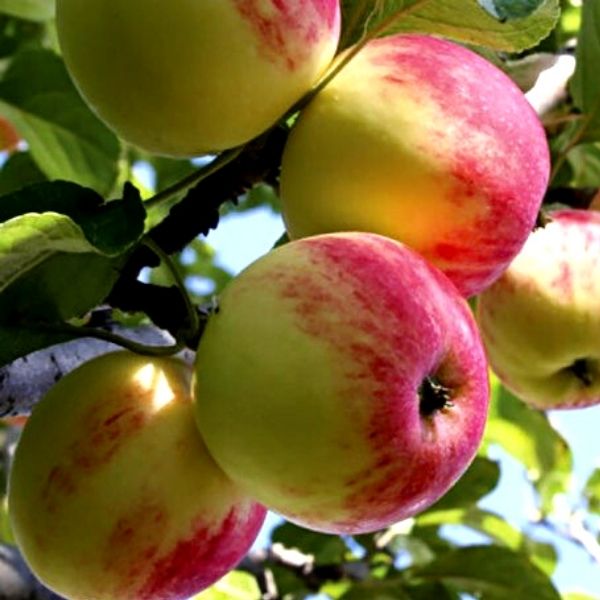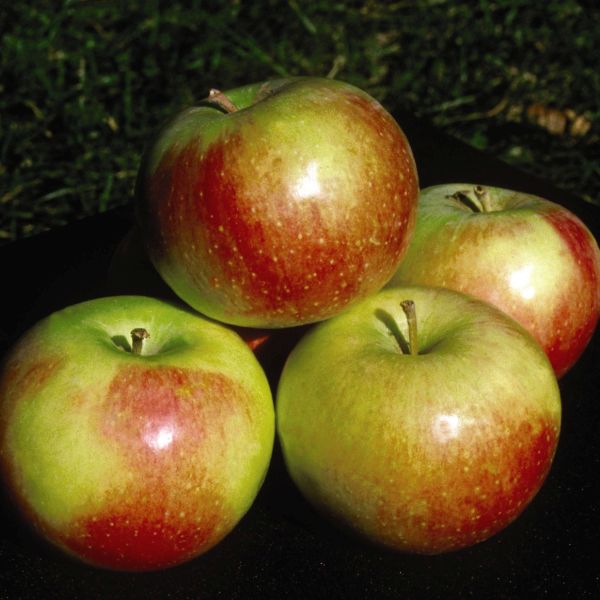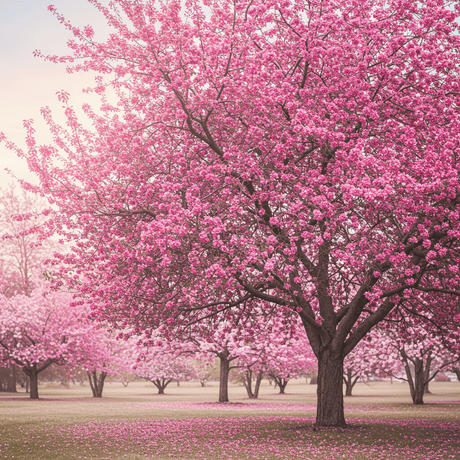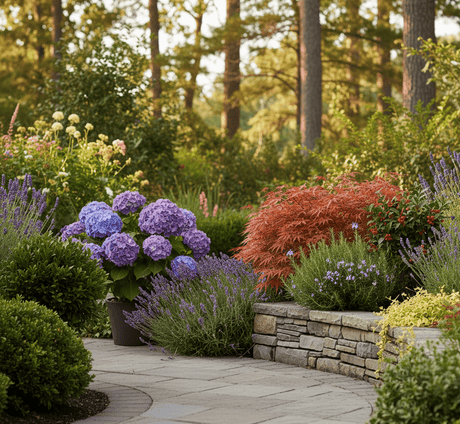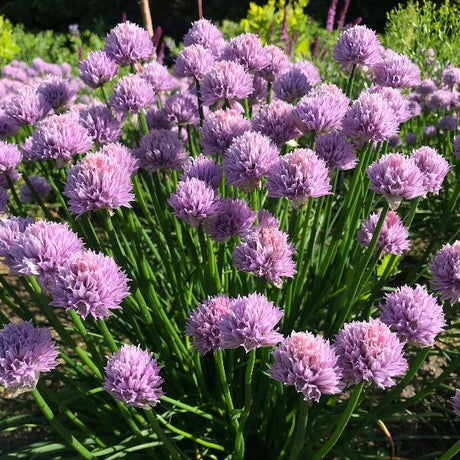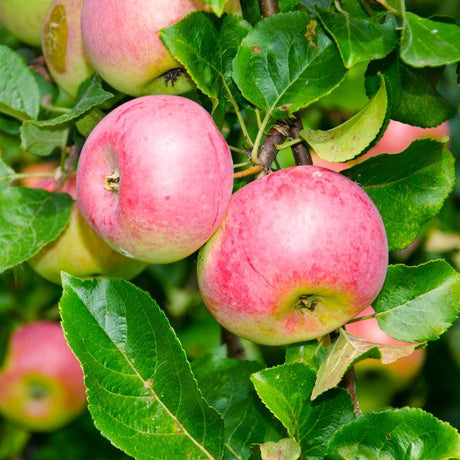Wealthy Apple Tree
Malus 'Wealthy'
- Stay Protected with Plant Sentry ™
Wealthy Apple Tree - #5 Container 4-5 Feet Semi-Dwarf is backordered and will ship as soon as it is back in stock.
Plant Sentry™
Plant Sentry™

Plant Sentry™ Protected
Your order is protected by our compliance system that:
- Prevents restricted plants from shipping to your state
- Ensures plants meet your state's agricultural requirements
- Protects gardens from invasive pests and diseases
Delivery and Shipping
Delivery and Shipping
Delivery and Shipping
Fast, Safe Plant Delivery
Ships in 3-4 business days • Tracking provided • Weather protected
| Under $50 | $9.99 |
| $50 - $99.99 | $14.99 |
| $100 - $149.99 | $16.99 |
| $150 - $198.99 | $24.99 |
| $199+ | FREE |
✓ Zone-specific timing • ✓ Professional packaging • ✓ Health guarantee
Understanding Plant Options
Nature Hills offers plants in two main formats:
- Container Plants: Grown in pots with soil, sized by container volume and plant age
- Bare Root Plants: Dormant plants without soil, sized by height measurements
Container Plant Sizes
Container sizes indicate plant age and growing capacity rather than liquid volume equivalents. Our containers follow industry-standard nursery "trade gallon" specifications, which differ from standard liquid gallon measurements.
Young Plants (6 months to 18 months old)
| Container Size | Actual Volume | Metric Equivalent |
|---|---|---|
| 2" x 2" x 3" | 0.18 - 0.21 dry quarts | 0.20 - 0.23 dry liters |
| 4" Container | 0.31 - 0.87 dry quarts | 0.35 - 0.96 dry liters |
| 4.5" Container | 0.65 dry quarts | 0.72 dry liters |
| 6" Container | 1.4 dry quarts | 1.59 dry liters |
| 1 Quart | 1 dry quart | 1.1 dry liters |
| 5.5" Container | 1.89 dry quarts | 2.08 dry liters |
Established Plants (18 months to 2.5 years old)
| Container Size | Actual Volume | Metric Equivalent |
|---|---|---|
| 2 Quart | 2 dry quarts | 2.2 dry liters |
| #1 Container | 2.26 - 3.73 dry quarts | 2.49 - 4.11 dry liters |
| 5" x 5" x 12" | 3.5 - 4.3 dry quarts | 3.85 - 4.74 dry liters |
Mature Plants (2-4 years old)
| Container Size | Actual Volume | Metric Equivalent |
|---|---|---|
| #2 Container | 1.19 - 1.76 dry gallons | 5.24 - 7.75 dry liters |
| #3 Container | 2.15 - 2.76 dry gallons | 8.14 - 12.16 dry liters |
Large Plants (3-5 years old)
| Container Size | Actual Volume | Metric Equivalent |
|---|---|---|
| #5 Container | 2.92 - 4.62 dry gallons | 12.86 - 20.35 dry liters |
| #6 Container | 5.25 - 6.01 dry gallons | 23.12 - 26.42 dry liters |
| #7 Container | 5.98 - 6.53 dry gallons | 26.34 - 28.76 dry liters |
Bare Root Plants
Bare root plants are sold by height from the root system to the top of the plant. Plants may exceed minimum height requirements.
Common Sizes:
- Trees: 1 foot, 2 feet, 3 feet, 4 feet, 5 feet, 6 feet
- Shrubs & Perennials: 1 foot, 18 inches, 2 feet
Important Notes
Container Volume Specifications
- Trade Gallon Standard: Our containers follow industry-standard "trade gallon" specifications established by the American National Standards Institute (ANSI Z60.1) for nursery stock
- Volume Variations: Actual soil volume may vary due to plant root systems and growing medium settlement
- Age Indicators: Container size primarily indicates plant age and maturity rather than liquid volume equivalents
Growing Conditions
- Plant size can vary based on variety and growing conditions
- Container size helps indicate plant maturity and establishment level
- Larger containers generally mean more established root systems and faster landscape establishment
Seasonal Availability
- Bare root plants are available seasonally when dormant
- Container plants are available throughout the growing season
- Specific varieties may have limited availability in certain sizes
Questions?
For questions about specific plant sizes or availability, please contact our plant experts who can help you choose the right size for your landscape needs.
Plant Highlights
Wealthy Apple Tree highlights at a glance!
-
Botanical Name
-
Brand
-
Growing Zones4, 5, 6, 7
-
Growth RateModerate
-
Mature Height
-
Mature Width
-
Leaf Color
-
Flower Color
-
Fall Color
-
Pollinator FriendlyYes
-
Pollinator Required
-
Bloom PeriodLate Spring
Characteristics
Where To Plant
When To Prune
- Late Winter
Water & Moisture Needs
- Moderate
Sunlight Needs
Soil Needs
- Widely Adaptable
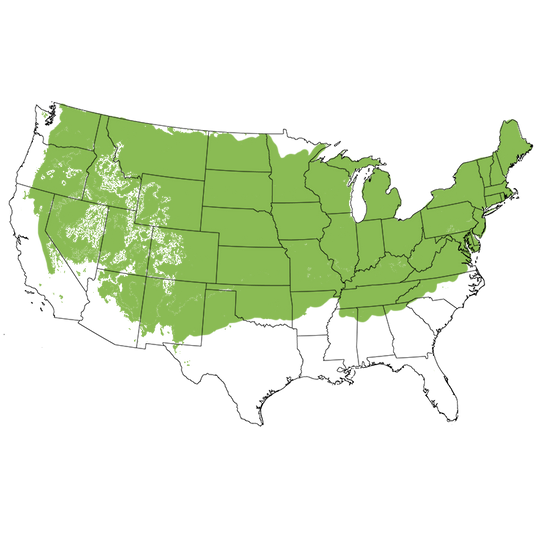
Growing Zones
Very Juicy Apple for Home Gardens - Wealthy Apple Tree!
- Very Juicy Red & Yellow-Green Apple
- Heavy Blooming Pink & White Flowers
- Great Pollinator Tree
- Easy Care & Low Maintenance
- Desserts, Pies, Cooked & Fresh Eating
- Mid-Season Sweet-Tart Fruit
- Needs Pollinator Partner For Biggest Crop
- Semi-Dwarf Size
- Very Cold Hardy!
- Great Heirloom Apple
- 1,000 Chill Hours
The Wealthy Apple Tree (Malus 'Wealthy') is a very juicy Apple, with a tart and sweet, lively flavor and notes of honey, raspberry and strawberry-like flavor.
It was one of the first high-quality Apple varieties grown commercially and it is now often grown by backyard orchardists and great for smaller urban landscapes in the cold North.
The Wealthy Apple is known for its intense pink and white springtime blooms that are sweet and fragrant. The long bloom period makes the Wealthy Apple tree a great pollinator of other Apple trees.
This mid-season Apple will be full of loads of red-blushed yellow-green fruit. The flesh is white with occasional streaks of red, which is crispy and very juicy.
Wealthy isn't named for how much money it will cost you to grow it. These easy-care trees were first created by Peter Gideon, who named this tree after his wife Wealthy Gideon in 1868. This heirloom fruit tree appeared as a cross between a mystery bushel of Apple seeds Peter received, and a species of Crabapple in his orchard. Creating a remarkably sweet-tart Apple Tree that is very cold-hardy!
Imagine how that apple would taste fresh from your own tree. Sweeter, juicier, firmer and just plain better! Plus, you have the added comfort of knowing just what went into (or didn't go into!) those fresh eating Apples before they appear on your family's table.
How to Use Wealthy Apples:
Wealthy Apple Tree is a multi-purpose Apple that is a medium to large fruit and more flat than round.
It is especially good for cooking, such as pies, crisps, sauces and delicious juicing and for cider. You can also use this variety for canning and preserving.
Wealthy often bear fruit early and store for 2-3 months. Its fruit tends to drop at maturity so be ready to gather your harvest.
The Apples mature earlier than other varieties, usually starting in September, and should be picked for cooking Apple when yellow-green with red blush, or picked when almost fully red-skinned when eating fresh.
How to Use Wealthy Apple Tree In The Landscape
A picturesque flowering tree in spring, the blooms will be buzzing with pollinators! Fragrant and highly ornamental, Wealthy trees are gorgeous in the landscape!
With edible landscaping using dual-purpose trees and shrubs all the rage nowadays, these semi-dwarf trees are suitable for landscapes of all sizes and able to be multi-purpose for front landscaping as well as home orchards of all sizes!
The extremely long bloom time for Wealthy Apple means it's a fantastic pollinator for other Apple trees. Compactly growing, it won't take up much room and prunes to any size readily.
Small ornamental trees like these make perfect specimens and focal point plants. They anchor buildings and large beds while looking beautiful year-round!
#ProPlantTips For Care
Wealthy Apple trees do need full sun for the most blooms and therefore the most fruit! Adaptable and tolerant of harsh winters, Wealthy is hardy from USDA growing zones 4 up to 8, and needs about 1,000 chill hours to set bloom.
Fruiting between 3 and 5 years old, Nature Hills trees are old enough to start fruiting after their first year getting established!
Great pollinator tree for other mid-late season species of Apples. Wealthy Apple Tree is very cold hardy & has good resistance to apple scab, fire blight and cedar-apple rust.
Water well and do not allow the soil to dry out between waterings while establishing, and through their first year. While partly drought-tolerant, for best fruit be sure to not let your investment go long without water.
Mulch the root ball well to help hold in moisture and keep the roots insulated from both heat and cold to about 2 feet from the trunk, but be sure to never pile mulch up around the trunk of the tree.
Preferring rich, loamy to humus, organically enriched medium any moisture-holding site that has very well-draining soil works great, be sure to compost and amend as needed for best results.
If drainage is a concern or you know your soil puddles after a rain, or watering, consider elevating the planting area to bring the roots above the water and provide them plenty of access to oxygen. Add 18 - 24 inches of soil above the native soil line and plant your tree directly in that mound, also known as a berm.
Water using the "Finger Test" by sticking your finger into the soil near the roots to the second knuckle. If it's moist, skip watering that day. If dry, then provide a deep watering to saturate the entire root system.
People often rate the Wealthy Apple as their favorite. Plant them for yourself and you'll soon discover why! Whether you are a first-time fruit tree planter or expanding your orchard, you will easily find room for one of these gorgeous compact additions!
Wealthy Apple has been a garden favorite for a long time now, and it's sure to never go out of fashion. Grow Apples for your family with this amazing home orchard-ready size Wealthy Apple Tree from Nature Hills Nursery. Give us a call today!
Wealthy Apple Tree Frequently Asked Questions
When to Plant Wealthy Apple Trees
Planting Bareroot trees as soon as you can dig a hole in spring and until hot weather, the earlier the better. Plant container Apple trees throughout the growing season with complete success - that is the benefit of container plants - to extend the planting season. Your County Agricultural Extension Office is a great resource for first and last frost dates in your area.
How to Plant Wealthy Apple Trees
Dig a large hole only as deep as needed to accommodate the bareroot or container root ball, and twice as wide. Add Nature Hills Root Booster to speed root establishment. Remove the pot or bag and situate it into the hole so the top of the soil (soil line if bareroot), is level with the new location's soil being careful not to plant too deep. Water in again very well and back-fill with the same soil you dug up, tamping down gently to ensure there are no air pockets.
Top off with a 3-4 inch thick layer of Arborist mulch. Consider staking your tree to keep its trunk growing straight for the first year to ensure it stands tall against strong winds and drifting snow.
When to Prune Wealthy Apple Trees
Trim off any broken branches from delivery as soon as you take them out of the box. Prune and trim apple trees while dormant, in late winter or early spring, before you see new growth.
How to Prune Wealthy Apple Trees
Dormant prune to:
- Remove any double leaders or narrow crotch angles
- Eliminate any crossing branches
- Thin interior branching and leave the fruiting spurs and strong branches in place opening up the canopy
- Branching at least 24-36 inches above the ground
Prune Apple trees in the summer to:
- Control size and shape by reducing the length of longer new growth on vigorous trees
- Remove water sprouts on the main trunk or older branches in the crown
- Remove suckers at the base of the trunk
- Thin fruit during heavy years on established trees
How to Care for Wealthy Apple Trees
Growing an apple tree is easy when proper soil, good drainage, attention to moisture, and regular fertility are maintained. Once you've chosen an apple tree that works for your climate, in the size you need for your landscape, and its pollinator (if needed), then you've accomplished half the battle!
- Apple trees do best in full sun and well-drained soil
- Water your apple trees when it gets dry - especially during the fruit production stage, and drought periods to keep it stress-free
- Use arborist wood chips to mulch over the roots of your apples and have your soil tested to see what your soil may be lacking before adding fertilizers
- Maintenance pruning and shaping
Apple trees will tolerate a wide range of soils, so long as water and nutrients are not limited and the pH level is adequate.
How to Fertilize Wealthy Apple Trees
For the first year, water alone is most important. It is always best to get a soil test to see what your soil is lacking before adding more fertilizers. Once established, a fertilizer routine may be beneficial. We do offer some excellent slow-release organic options, applied according to the package directions.
Fruit trees need more phosphate and it's possible to apply too much nitrogen which affects the soil's pH. Test soil acidity or alkalinity using a pH Tester.
Fertilize in spring when you first see new growth emerging.
- Don't overdo it
- Phosphates are your friends
- Pay attention to pH in areas with extremely high or low soil pH
- Follow the directions
Wealthy Apple Tree Pollinating Info
Wealthy will need a compatible cultivar to cross-pollinate with to make fruit, and will bear significantly more fruit when paired with one of these many varieties:
Centennial Crab, Cortland, Cox's Orange Pippin, Cripps Pink, Dolgo Crabapple, Empire, Enterprise, Freedom, Frostbite, Fuji, Garden Delicious Apple Tree, Gala Apple Tree, Ginger Gold, Golden Russet, Honeycrisp, Idared, Jonathan, Macoun, Melrose, Newtown Pippin, Pixie Crunch, Red Delicious, SnowSweet, and Wolf River, among many others.
Harvest Times for Wealthy Apple Trees
Wealthy's are typically ready to harvest in late August through early September.
Early-Season? Mid-Season? Late-Season? The terminology can be confusing for new apple tree growers. Weather, climate, and your tree determine when it's ripe.
For Apples:
- Early-season is usually June-July
- Mid-season can be August-September
- Late-season can be from late September-November
The growing season consists of spring, summer, and fall, and varies with climate and weather. Areas with longer growing seasons in the warmer hardiness zones can greatly affect the harvest times for each particular apple variety grown in your area.

